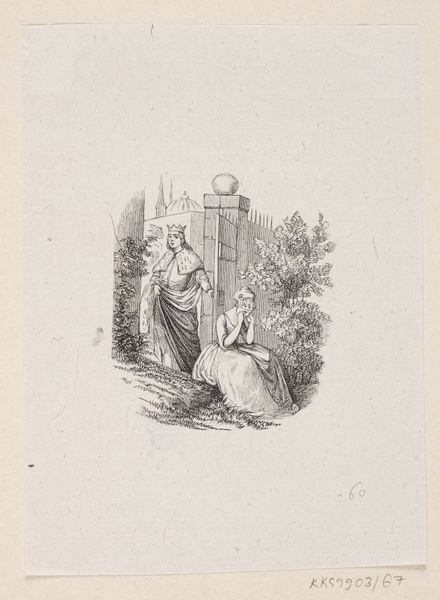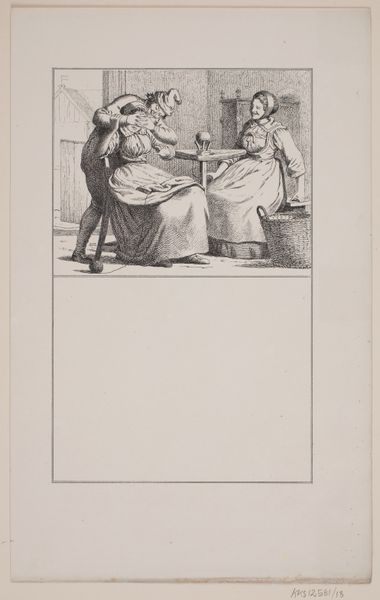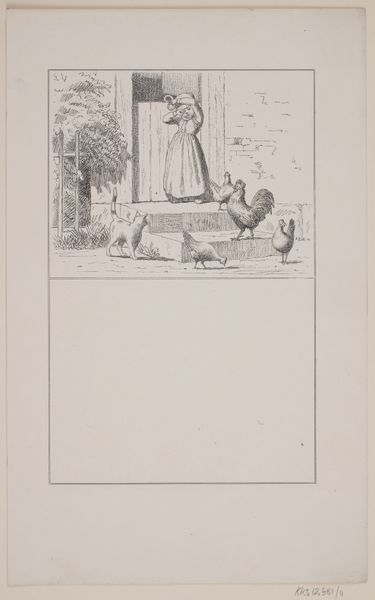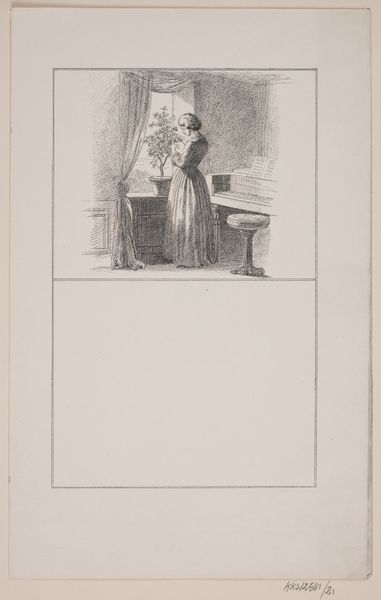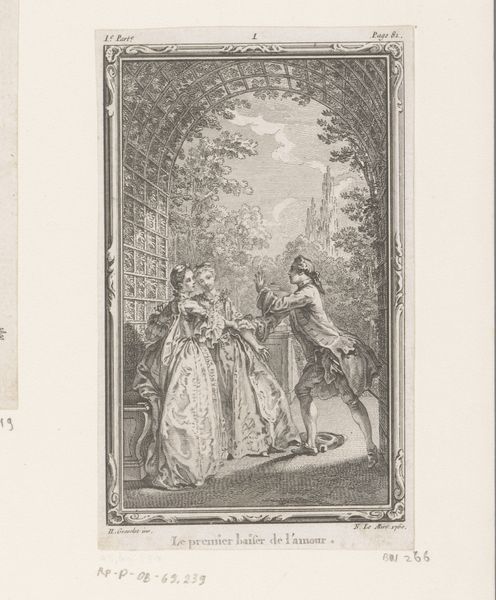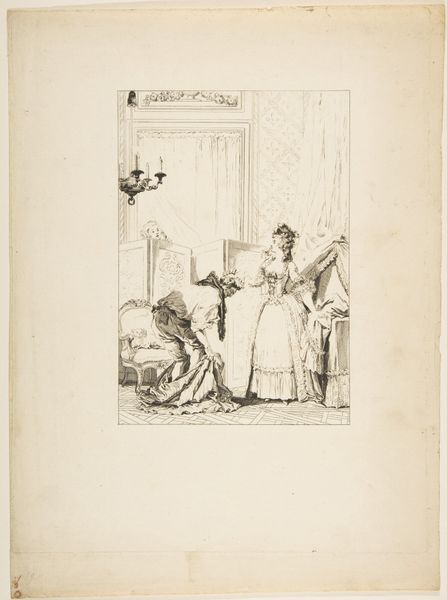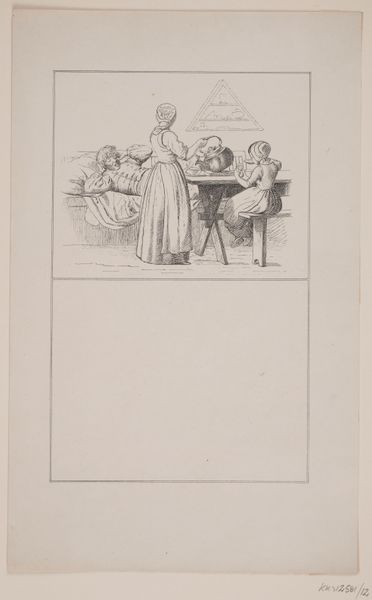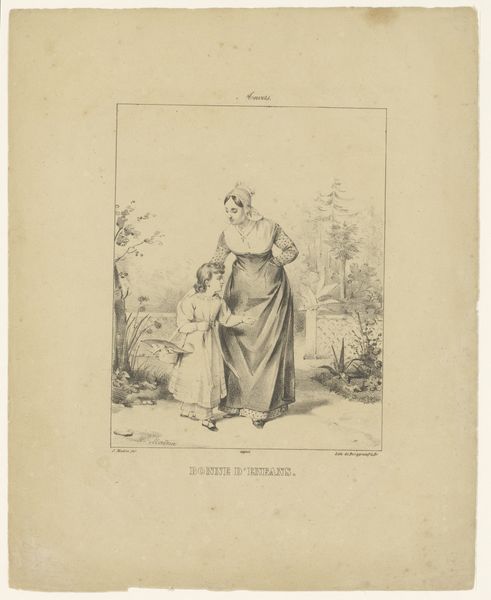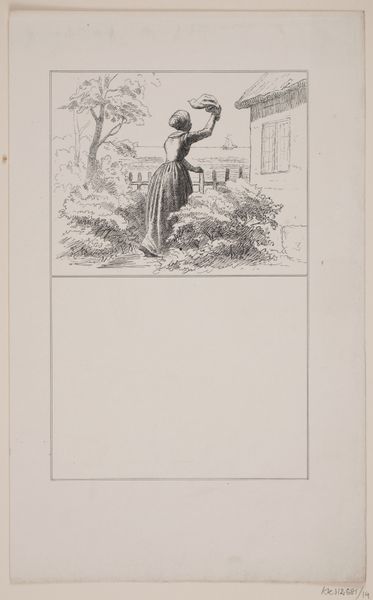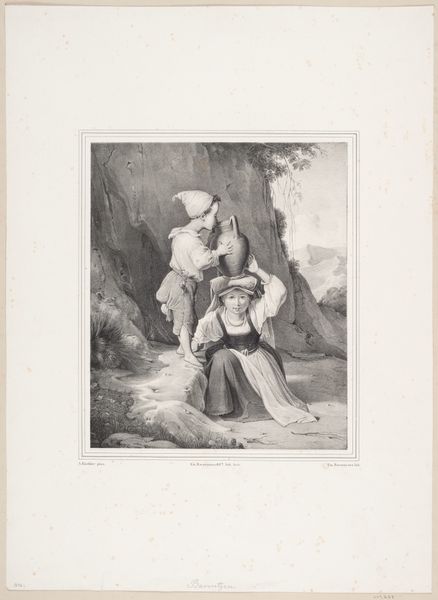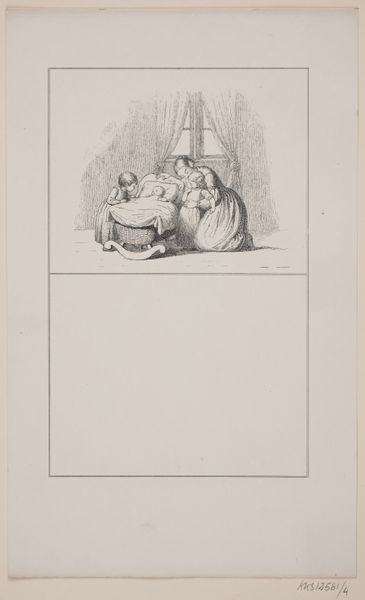
drawing, lithograph, print, etching, paper, pen
#
drawing
#
lithograph
# print
#
etching
#
landscape
#
figuration
#
paper
#
pen
#
genre-painting
#
academic-art
Dimensions: 262 mm (height) x 165 mm (width) (brutto)
Curator: This subtle work before us is "Barnets grav," or "Child's Grave," by Adolph Kittendorff, created around 1862. It's rendered with pen, etching, and lithography, a combination creating an interesting texture. Editor: It’s a quiet piece. There's a softness to the lines, and a feeling of gentle sorrow permeates it, despite the seemingly commonplace setting. Curator: Indeed. Consider the potent symbols Kittendorff uses. We see a mother figure planting a small tree or shrub into a large pot on what might be a grave, accompanied by a young child. A stylized dovecote watches in the background. Editor: And isn't that dove imagery, across many cultures, associated with loss and the soul's journey? It’s particularly striking against the backdrop of what seems to be a rather typical, even idyllic, Danish homestead. Juxtaposing death with everyday life. Curator: Precisely. These garden scenes often suggest notions of growth, cultivation, care—but here, it speaks more broadly about life's cyclical nature, and the societal norms that require us to keep functioning even in times of profound personal loss. Editor: It speaks to the experience of motherhood in the 19th century too, I imagine. Child mortality was much higher. Grief was a common and perhaps public experience. There's a vulnerability captured here in the women’s bowed heads that makes me think of contemporary mourning rituals as well. It is interesting that Kittendorff highlights their labor and work in honoring their child's memory. Curator: What you touch on regarding visibility is compelling. This work can also be seen within the broader cultural moment— academic art sought to teach morals or document local life. But Kittendorff infuses this everyday setting with quiet solemnity that transforms it from a simple genre scene into a meditation on loss. Editor: And yet, it manages to avoid sentimentality. Perhaps the understatement inherent in the lithographic medium and the modest scale contributes to its impact, which is what drew me into the piece upon my first observation. The simplicity holds the emotional complexity well. Curator: Agreed. The lack of dramatic flourish enhances its impact, inviting us to reflect not only on grief as an emotion but on how society chooses to memorialize it or chooses not to. Editor: It makes me consider how public mourning changes over time. The lack of names or overly sentimental adornments allows the themes in "Child’s Grave" to linger longer. It remains quietly potent across generations.
Comments
No comments
Be the first to comment and join the conversation on the ultimate creative platform.
